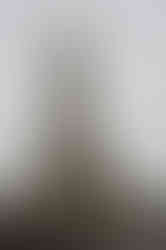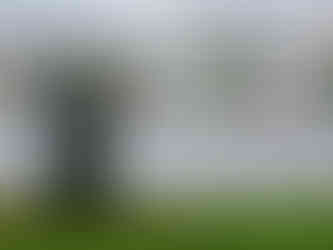Iceland, Reykjavik Region
- Steve
- Jul 2, 2014
- 6 min read
Updated: May 7, 2021
So begins our travel to Iceland, one of the most beautiful places we have ever visited. Iceland is a country of sharp contrasts. A place where fire and ice co-exist. Where dark winters are offset by the summer’s midnight sun. Our goal was to experience as much of the island as possible. We were successful, but I still think a second visit is in the cards for us! Because there were so many activities and locations, I've broken the trip into 4 separate blogs. Click on the hyperlinked text to navigate to the selected blog.
1. Reykjavik Region
Icelandic Language
We were hoping it was pronounced just like it was spelled! The Icelandic language has changed little over time, staying true to the form of Icelandic that existed during the Middle Ages. Icelandic is a very phonetic language. When you’ve learned how to pronounce the letters, you can read and pronounce words correctly. The stress is always on the first syllable and there are no silent letters.

The Icelandic alphabet has 18 consonants and 14 vowels. A few helpful hints:
The Icelandic J is pronounced like the English Y.
The Icelandic Þ is pronounced like TH. So the anglicized version of the national park ‘Þingvellir’ is Thingvellir.
The Icelandic Æ is pronounced like the English L.

Reykjavik
Reykjavík is believed to be the first permanent settlement in Iceland, which was established around 874 AD. It is the capital and largest city of Iceland. With a latitude of 64°08'N, Reykjavik is the world's northernmost capital of a sovereign state. It is also among the cleanest, greenest, and safest cities in the world.
Dominating the city skyline is the Hallgrímskirkja Lutheran church. At 244 feet tall, it is the largest church in Iceland and among the tallest structures in the country. It took 41 years to build the church: construction started in 1945 and ended in 1986.
In front of the church, the statue of explorer Leif Erikson (970–1020) actually predates the church's construction. It was a gift from the United States commemorating the 1000th anniversary of Iceland's parliament at Þingvellir in 930 AD.

An observation platform in the clock face provided great views of this small but vibrant city.
Reykjavik is a city where old neighborhoods and modern buildings effortlessly blend into the environment.
Thrihnukagigur Volcano Hike & Tour (4 miles and 400 feet down)
The name of this incredible tour says it all....'Inside the Volcano'. Step 1: Complete a 2 mile hike to the dormant Thrihnukagigur volcano. Step 2: Climb to the top of the volcano. Step 3: Enter an open cable lift and descend 400 feet to the bottom of the volcano's magma chamber. Step 4: Take thousands of pictures. Yeah, this crazy stuff only happens in Iceland.
The hike started at the foot of the Blafjoll mountain range located 30 minutes from Reykjavik. Even hiking through the old lava field was beautiful. There was no trace of civilization, just rocks sprinkled with moss and lichen and peaks extending across the horizon in all directions.
Starting the final climb to the top of the volcano cone that rises 115 feet from the surrounding grounds. Cave explorer Árni B Stefánsson discovered the magma chamber in 1974 but the first tourists did not enter the volcano until 2012.

The metal supports for the cable lift are visible in the top center of this picture.

At the top of this cone is a funnel-shaped opening approximately 12x12 feet wide. Steel girds span the opening and a 'gang plank' leads to the cable lift that looks like a window washing platform. After donning our helmet and harness, we climbed into the lift for the 'express elevator' down. The 440 feet descent lasted about 6-7 minutes.



During the slow descent, the beauty of the magma chamber became immediately apparent. Intense heat and pressure from an eruption over 4000 years ago gave the rocks an incredible mix of colors and textures.

Shades of yellow, purple, red, and green are splattered over the walls. The colors are so vibrant, it’s difficult to believe that they were created by nature.


Typically, when a volcano goes dormant, the magma chamber cools and solidifies. But for Thrihnukagigur something exceptional happened during its last eruption that somehow resulted in the formation of a gigantic, empty magma chamber. Some scientists theorize that lava drained through tunnels and arteries deeper in the earth.


How big is the magma chamber? At the bottom, the bottle-shaped chamber measures approximately 160x220 feet or almost the size of 3 basketball courts laid side by side.


Golden Circle
So what is the Golden Circle? It's a common route between 3 beautiful natural attractions; Þingvellir National Park, Geysir geothermal area, and Gullfoss waterfall. Instead of driving back and forth the same way, people normally drive a short circle, that's just under 140 miles.
For today's adventure, I was definitely getting into the Norse/Viking spirit with my wool cap.

Stop 1: Thingvellir National Park
Thingvellir National Park was the original site of Althingi, the general assembly of the Icelandic commonwealth. Althingi was established in 930 AD and is still in operation today, making it Europe’s oldest parliament. Every summer, farmers would ride to Althingi to settle legal disputes, take part in legislative work, and attend to business issues.

For me the real attraction was the geological significance of this area. Thingvellir is situated between two tectonic plates, the North American and the Eurasian. The North American plate is slowly moving westward; while the Eurasian plate is slowly moving eastward. The country of Iceland is slowly being pulled apart.
Thingvellir is one of only two sites on Earth where the effects of tectonic plates drifting can be observed. When you enter the park, you drive towards a sheer cliff (left side of the picture below) which is the corner the North American plate.

These people are walking through the Almannagjá fault; the crack in the Earth's crust caused by the North American plate pulling away.

This giant crack is almost 5 miles long. In some locations the gap is only a few feet wide but in other areas like in the picture below the gap is almost 200 feet wide.

On the opposite side of the park, about 3+ miles away, is the Hrafnagjá fault which is the edge of the Eurasian plate. So there is no one place to stand in Thingvellir and touch both plates. The piece of land between these two faults is a 'graben' trough. The graben grows on average 0.3 inches wider and drops 0.04 inches lower each year. However, during the last big earthquake in 1789, the graben sank 3-7 ft in less than a minute.



Stop 2: Geysir Geothermal Area
The geothermal area in the Haukadalur Valley is incredibly rich in hot springs and geyser activity. Although 'Great Geysir' is the most famous geyser in the park, it has erupted on average only 2-3 times per day since 2003. The new star attraction now is the Strokkur geyser which erupts every 4-10 minutes sending water 50-60 feet in the air.
Stop 3: Gullfoss Waterfall
Our last stop on the Golden Circle was Gullfoss. Gullfoss is one of Iceland's most iconic waterfalls. The water from the Hvítá River flows from the Langjökull Glacier to the Gullfoss waterfall where it cascading in two steps to a gorge.

Stage 1, water plunges 36 feet over a series of rock steps.
Stage 2 involves a 69 foot drop into the Gullfossgjúfur canyon whose walls rise over 230 feet above the river.


A short video that Dave shot of Gullfoss.
Blue Lagoon
The Blue Lagoon is a geothermal spa located in a lava field near Grindavík on the Reykjanes Peninsula.

The lagoon is man-made. The water is a byproduct from the nearby geothermal power plant Svartsengi. Superheated water is vented from the ground near a lava flow and used to run turbines that generate electricity. The water's milky blue shade is due to its high silica content. The silica forms soft white mud on the bottom of the lake which people rub on themselves. The water temperature in the lagoon averages 99-102 °F. Of course there is swim/walk up bar in the middle of the lagoon!


























































Comentários